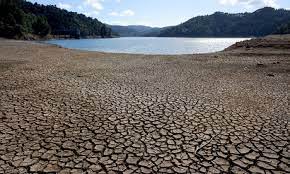새로운 연구에 따르면 Covid-19 팬데믹 기간 동안 뉴질랜드의 조치로 약 20,000명의 사망자가 발생하지 않았습니다.뉴질랜드 의학 저널 (New Zealand Medical Journal) 에 공유된 이 연구는 16명의 최고 과학자와 의사가 기고한 것으로, 모든 주요 호흡기 질환이 유사한 치료 조치를 취해야 한다고 제안합니다.
주 저자인 오타고 대학교의 마이클 베이커 교수는 공중 보건 조치의 성공에 대해 언급하면서 위기를 피할 수 있는 것처럼 보이면 사람들이 애초에 이러한 조치의 필요성에 의문을 제기할 수도 있다고 지적했습니다.
뉴질랜드는 Covid-19로 인해 3,000명 이상의 사망자를 기록했지만, 뉴질랜드의 사망률은 전 세계에 비해 낮습니다.베이커 교수에 따르면 뉴질랜드가 미국과 비슷한 사망률을 경험했다면 약 20,000명의 목숨을 잃었을 것입니다.뉴질랜드가 성공할 수 있었던 비결은 2년간 바이러스를 제한하여 인구 대다수가 백신 접종을 받을 수 있도록 한 것입니다.
캔터베리 대학교의 마이클 플랭크 (Michael Plank) 교수는 돌이켜보면 일부 프로세스가 개선될 수 있었을 것이라고 믿고 있습니다.하지만 초기의 엄격한 봉쇄와 같은 주요 결정은 옳았습니다.그는 향후 발생할 수 있는 보건 위기에 대비하여 더 잘 대비하는 것이 중요하다고 강조합니다.
예방 접종 자문 센터 소장인 니키 터너 박사는 뉴질랜드의 높은 백신 접종률이 사망자 수를 낮게 유지하는 데 중요한 요인이라고 말했습니다.그러나 그녀는 사람들이 이러한 조치가 얼마나 효과적이었는지는 잊어버리고 집단 발병이 시작될 때만 위험을 인지하는 경향이 있다고 지적했습니다.
전문가들은 만장일치로 Covid-19가 지속될 수 있다고 해서 감염을 피할 수 없는 것은 아니라고 믿었습니다.이 전략에는 취약한 사람들에게 백신을 접종하고, 공기 질을 개선하고, 특정 상황에서 마스크를 착용하는 것이 포함됩니다.베이커 교수는 곧 발표될 영국 왕립 조사위원회 (Royal Commission of Inquiry of Inquiry) 보고서에서 뉴질랜드가 더 심각한 위협에 더 잘 대비할 것을 촉구하면서 향후 팬데믹 대처 방법에 대한 통찰력을 제공할 것으로 기대하고 있습니다.






























































